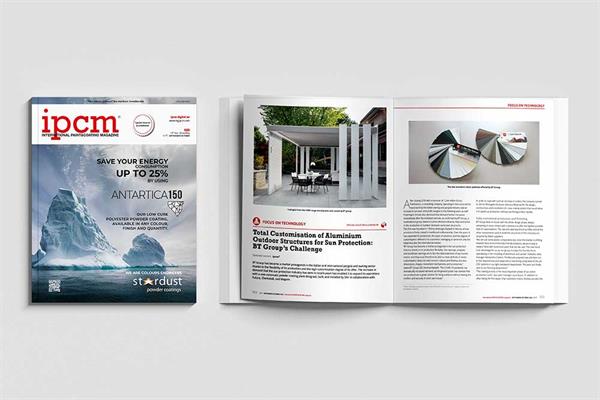
Read the latest issue of the magazine dedicated to surface treatments and organic and inorganic finishes. Special issue on aluminium.
I write these lines while attending IMTS 2022 in Chicago, probably the largest trade fair in the USA for the mechanical industry: a truly huge event, crowded with visitors from all over the world and interested in any innovation related to energy saving. Yes, even here in the US.
After the increases in raw material costs that overshadowed the European industry’s recovery in 2021, 2022 is sure to be the year of the serious consequences of the steep rise in gas prices – not only on households, which have benefited from government aid that has mitigated the impact of such increases, but above all on industrial companies. It is only when we read the order of magnitude of the changes in the bills paid by these firms between 2021 and 2022, that we realise how gas price increases are a more than real danger to economic recovery, consumption, production, and the very survival of many businesses.
Glassworks firms, ceramics and paper manufacturers, and other factories where plants operate at temperatures above 1000 °C have received energy bills of hundreds of thousands of Euros compared with a few tens of thousands last year. The cost of gas has increased by 450% compared with last year, making industrial costs unsustainable, even though order trends for the vast majority of companies are clearly positive. Demand is high, recovery is strong, but this upward race in gas prices is unstoppable, especially as it is going hand in hand with a general rise in the prices of raw materials, noble gases such as oxygen, logistics, and packaging.
Wondering to what extent these increases are the result of the tail end of the pandemic combined with the war in Ukraine and the resulting sanctions on Russia, tensions between the US and China, and market imbalances, or rather the result of speculation that favours only a few people is legitimate, and everyone can seek their own answers.
On the other hand, everything that is technologically feasible to reduce dependence on gas, save energy, reduce natural resources consumption, and approach the circular economy in the field of surface treatments, you will find it in the following pages, with a special focus on the production and finishing of aluminium for architecture and the industry.
It is well known that the finishing industry is one of the most energy-intensive ones, even more so when it comes to aluminium, which requires high-temperature processes to be cast, extruded, tempered, and aged, but also coated, oxidised, sublimated.
Inverters, waste heat recovery units, compact plants sized exactly to meet requirements without excess power or productivity, systems for the parsimonious use and recovery of water are just a few of the technologies – some of which are truly revolutionary, patented innovations – that you will find in this issue of ipcm®. Also featuring a large section dedicated to the surface treatment and finishing of aluminium for architectural and non-architectural applications, it will be the protagonist of the most important international event for this sector: Aluminium 2022, to be held from 27 to 29 September in Düsseldorf, Germany. After two years with a remote focus, Aluminium is going to return with a rich edition covering all segments of the industry, from foundry to coils to finishing.
ipcm® is a media partner of the event and it is going to be present with a stand (1A07) to closely follow developments, research results, and trends in this market, but also the launch of some innovative products by companies that have been collaborating with our magazine for many years.
You will get a taste of this in the next few pages (watch out for the advertisements!) and especially in real time on our social channels during the course of the trade fair. If you really want to stay up-to-date on the global dynamics of the finishing world, keep following us.